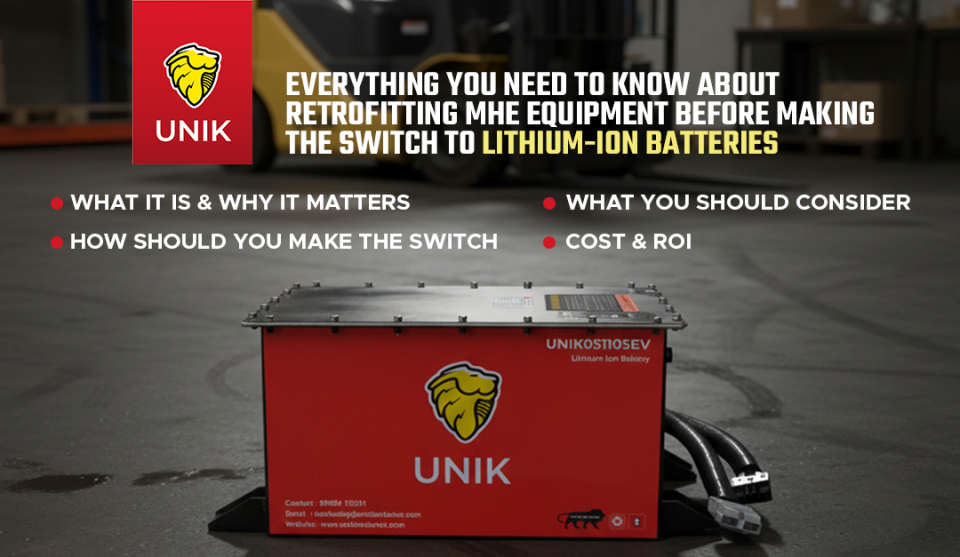Understanding Battery Failure Modes: Why Batteries Fail and How to Prevent Them
Battery failure isn't just inconvenient; it’s costly and potentially dangerous. Most failures are predictable if you understand the underlying causes and are proactive about maintenance. Whether you're managing backup systems, renewable storage, or industrial power infrastructure, recognising the common battery failure modes is essential for long-term reliability and safety. In this guide, we break down how and why batteries fail and, more importantly, what you can do to prevent it.
Why Do Lead‑Acid Batteries Fail?
The most common questions about lead-acid batteries are: “Why won’t my battery hold a charge anymore?” or “Why is my backup battery failing early?” The answer often lies in how the battery has been used or, in many cases, neglected.
Sulphation in Batteries — What It Is and How to Fix It
One of the most searched problems is sulphation in batteries. It occurs when a lead‑acid battery remains in a discharged state for too long. Soft lead sulphate crystals form on the plates and, if not reversed early, harden and become permanent. This increases internal resistance and decreases capacity often leading users to think the battery is "dead."
To prevent sulphation, it’s critical to:
- Keep batteries at full charge when in standby
- Avoid storing batteries when discharged
- Use equalisation charging periodically (especially in off-grid setups)
- Invest in maintenance or float chargers for systems not regularly cycled
Once hard sulphation sets in, full recovery may not be possible — making prevention key.
Positive Grid Corrosion
Another major cause of lead-acid battery failure is positive grid corrosion. This chemical process occurs over time as the lead grid oxidises, especially in high temperatures or overcharge conditions. This results in deformation of the grid, increased internal resistance, and ultimately, failure to deliver power when it’s most needed.
Prevention includes ensuring chargers are temperature-compensated and preventing float voltage from going too high. Cooler operating environments significantly extend grid life.
VRLA Battery Dry-Out
For Valve-Regulated Lead-Acid (VRLA) batteries, dry-out is a silent killer. These sealed batteries can't be refilled, so when the electrolyte slowly evaporates due to poor ventilation or incorrect charging, the internal resistance rises sharply. Dry-out often leads to total failure even in batteries that appear physically intact.
Key solutions:
- Maintain ambient temperature between 20–25°C
- Avoid overcharging, which accelerates moisture loss
- Monitor float current and temperature trends
Thermal Runaway in Lead‑Acid Battery Systems
Many facility managers ask, “Why did my battery overheat and swell?” This is usually a sign of thermal runaway which happens when excess current causes internal temperatures to rise faster than heat can dissipate, creating a feedback loop. It’s more common in VRLA batteries but can occur in any overcharged or poorly ventilated battery system.
Preventive actions:
- Ensure proper airflow in battery enclosures
- Set strict charging voltage limits
- Use temperature sensors to shut down charging if thresholds are exceeded
Lithium‑Ion Battery Failure Modes and User Solutions
Modern applications rely on lithium‑ion batteries for their high energy density and long life, but these systems bring their own set of risks and failure points.
SEI Layer Build‑Up and Capacity Loss
A gradual but inevitable ageing process in lithium‑ion batteries is the thickening of the Solid Electrolyte Interphase (SEI) layer. Over time, this insulating layer reduces ion flow, increasing impedance and decreasing capacity, which results in a decline in runtime.
Solution:
- Use battery systems with smart charging algorithms
- Keep operating temperatures within manufacturer limits
- Monitor impedance trends over time
Lithium Plating Failure — The Hidden Danger
One of the most serious and widely misunderstood failure modes is lithium plating. This occurs when charging happens too quickly, especially at low temperatures. Metallic lithium deposits on the anode can form sharp dendrites, which may pierce the separator and cause internal short circuits or even thermal events.
How to prevent lithium plating:
- Avoid fast charging in sub-zero temperatures
- Use smart BMS (Battery Management Systems) to detect unsafe conditions
- Ensure consistent thermal management in all seasons
BMS Failures and Cell Imbalance
The Battery Management System is the brain of a lithium battery pack. If it malfunctions due to software bugs, sensor errors, or poor manufacturing, the result can be catastrophic. Overcharging, undercharging, or cell imbalance may go unchecked, increasing the risk of thermal runaway.
To reduce BMS-related risks:
- Choose batteries with tested, certified BMS units
- Update firmware regularly (if applicable)
- Use logging and monitoring systems to catch anomalies early
Understanding common battery failure modes is the first step — choosing the right battery solution is the next. Whether you need reliable replacements for industrial systems, renewable storage, or backup power, selecting high-quality batteries is key to long-term performance and safety.
Explore UNIK’s range of premium lead-acid and lithium-ion batteries — built for durability, tested for performance. Contact us to know more.






